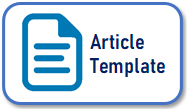Identifikasi Koleksi Jamur dari Cangkang dan Pasir Sarang Telur Penyu Lekang (Lepidochelys olivacea L.) di Penangkaran Pariaman
Abstract
Keywords: Identification, Fungus, Egg shell, Nest sand, Lepidochelys olivacea L.
Full Text:
PDFReferences
Barnet, H. L., and B. B. Hunter. 1972. Illustrated Genera of Imperfect Fungi. 4th edition. Macmillian publishing company. United States of America. Amerika.
Booth, C. 1977. Fusarium: Laboratory Guide to the Identification of The Major Species. Common wealth Mycological Institute, Kew Surrey. England.
Bruner, D. W., and J. H.Gillespie. 1973. Hagan's Infectious Diseases of Domestic Animal. 6th ed. With Special Reference to Etiology, Diagnosis, and Biology Therapy. Cornell University Press. Ithaca and London.
Clusella, T. S., andF.V. Paladino. 2007. Micro-environment of Olive Ridley Turtle Nest Deposited During an Aggregated Nesting Event. Journal Zoology 272:367-376.
Cornelius, S. E., R. Arauz., J. Fretey., M. H. Godfrey., R. Marquez., and K. Shanker. 2007. Effect of and based harvest of Lepidochelys. In: Plotkin, P.T. (Ed.). The Biology and Conservation of Ridley Sea Turtles. Baltimore: Johns Hopkins University Press, pp. 231–251.
Petocz, G. R. 1987. Konservasi Alam dan Pembangunan di Irian Jaya (Strategi pemanfaatan sumber daya alam secara Rasional). Pustaka Grafitipers. Jakarta.
Phillott, A. D. 2001. The distribution of failed eggs and the appearance of fungi in artificial nests of green (Chelonia mydas) and loggerhead (Caretta caretta) sea turtles. Journal Zoology 49: 713-718.
Phillott, A. D., and C. J. Parmenter. 2001. Influence of diminished respiratory surface area on survival of sea turtle embryos. Journal Zoology 289:317–321.
Phillott, A. D., C. J. Parmenter., C. J. Limpus., and K. M. Harrower. 2002. Mycobiota as acute dan chronic cloacal contaminants of female sea turtles.Journal Zoology 50:687– 695.
Quimio, H. T., and T. R. Hanlin. 1999. Illustrated Genera dan Species of Plant Pathogenic Fungi in The Tropics. University of ThePhillippines Los Banos, College, Laguna. Phillippines.
Sarmiento-Ramirez, E. Abella., M. P. Martın., M. T. Tellerıa., L. F. lopezJurado., A. Marco., and J. Dieguezuribeondo. 2010. Fusarium solani is responsible for mass mortalities in nests of loggerhead sea turtle, Caretta caretta, in Boavista, Cape Verde. FEMS Microbiol Lett 312:192–200.
Samson, A. R., and E. S. V. Reenenhoekstra. 1988. Introduction of food Borne Fungi. Central bureau Voor Schimme cultures Baarn. New York.
Wyneken, J., T. J. Burke., S. Malmon., and D. D. K. Pedersen. 1988. Egg failure in natural and relocated sea turtle nests. Journal Herpetology 22: 88-96.
Refbacks
- There are currently no refbacks.




